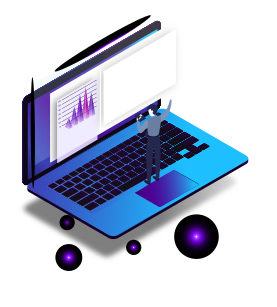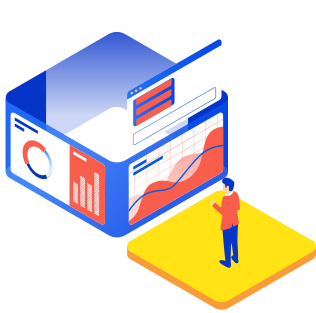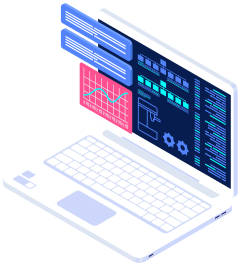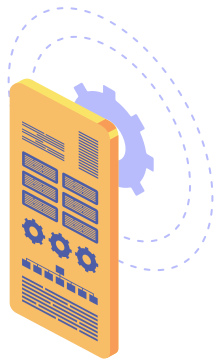Get your own
Production
Line in Check
You have a problem with efficiency, downtimes, work orders tracking or process parameters?
See how we can help your business – step by step.
Digital transformation – another step into the future

What exactly is digital transformation?
Changes to data collection and processing are part of the digital transformation. Thoughts initially turned to transferring analog documentation to computer systems, but the implications go much further.
How does digital transformation work? It is a transformation that alters supply chains, businesses, or production. The Tipteh IoT Platform digitizes every step of the manufacturing process, from data collection from the machine to data analysis, information reporting, and efficient production plan execution.
How does digital transformation affect different business models?
The way businesses operate is changing as a result of digital developments. Regardless of company size or the consumer base they serve, a variety of manufacturing firms opt for this service. Even small firms are aware that implementing digitization today creates a variety of prospects for the future. This is why small businesses hunt for digital transformation efforts and emulate them as early as the business plan stage.
The use of digital transformation services greatly simplifies and speeds up team communication. Each member of the crew can view the status of the machine and the accurate output that is presently being worked on in real time. They don’t needlessly repeat their activities as a result. Everyone follows through on their responsibilities, which boosts team output. This would not have been conceivable if the digital business transformation hadn’t occurred.


What is the digital transformation strategy about?
The primary pillar of the digital transformation strategy is the necessities of production. It must improve its effectiveness over time. The outcome must also be of a high caliber. System support is necessary for every department in a modern plant. Digital transformation substantially facilitates and speeds up work at each of these stages: planning, implementation, quality assurance, and maintenance. On the other side, the strategy’s goals are to digitize distribution networks, cut costs, and boost efficiency.
Digital transformation across different components
What might the blueprint for digital transformation look like? It is made up of 4 parts:
- Performance tracking for OEE. OEE enables in-the-moment tracking of performance, accessibility, and quality metrics. It enables you to identify areas where the production process needs improvement and elevate the indicators to the standard that the client demands.
- The program offers paperless production, traceability, and quality control procedures.
- The Energy Monitoring System makes it possible to continuously monitor the plant’s utilities and displays the true expenses associated with production.
- Real-time Scheduling enables the creation of a production schedule and increases the danger of not completing the manufacturing order by the deadline.
When constructing such a map, we should specify the areas that will undergo change while taking into consideration the changes and the domains they will affect that we are most interested in. For instance, these can be split up into production, maintenance, quality, and planning. These four elements will each have a unique effect on all the topics covered. The next stage of business process evolution is driven by digital transformation services.


How are digital technologies changing production?
Because digital technology doesn’t require paper for documentation, production is greener. The same fact also facilitates faster departmental communication within the production. Any anomalies are instantly identified and can be fixed. A digital transition increases the effectiveness of production. You can obtain high-value products and attain higher performance metrics by integrating systems and utilities. It also enables you to reduce production costs by identifying and removing weak points. All of this contributes to a more encouraging work environment.
As part of the digital transformation framework, cloud data storage is a smart choice because it promotes scalability and lowers startup costs. While utilizing any utility, this software is available. You can freely exchange info in real time using it as well.
Tipteh IoT Platform solution – what does it mean for your company?
Digitization results in lower costs, more efficacy, and the potential for quicker growth. But we can already assure you that once you’ve experienced how digital technology is revolutionizing production, you’ll never go back to the old approaches of the past.

Your Project In 6 Steps
1.
You have a problem with efficiency
2.
You reach out to Tipteh’s experts on that topic
3.
After the meeting, you’re informed about all the benefits of TSF products.
4.
Your business gets an official offer, tailored to your needs and production type
5.
Integration process begins
6.
Reap the benefits of your new system
Your Project In 6 Steps
1.
You have a problem with efficiency
3.
After the meeting, you’re informed about all the benefits of TSF products.
5.
Integration process begins
2.
You reach out to Tipteh’s experts on that topic
4.
Your business gets an official offer, tailored to your needs and production type
6.
Reap the benefits of your new system
See How Our Solutions Can Help You
A Tipteh automation specialist is waiting for your call. Find out how our software can help your business improve in efficiency.
Frequently Asked Questions
Yes, Tipteh integrates with most systems available on the market (SAP, etc.)
Yes, our experts are ready to share their experience and knowledge with you. After years of putting systems in place, we have developed best practices and protocols to support our clients.
Tipteh supplies an 80% ready-to-work system. 20% is customizable to the customer’s case.
Usually, it takes up to 6 months to implement the system and see the first positive results.

